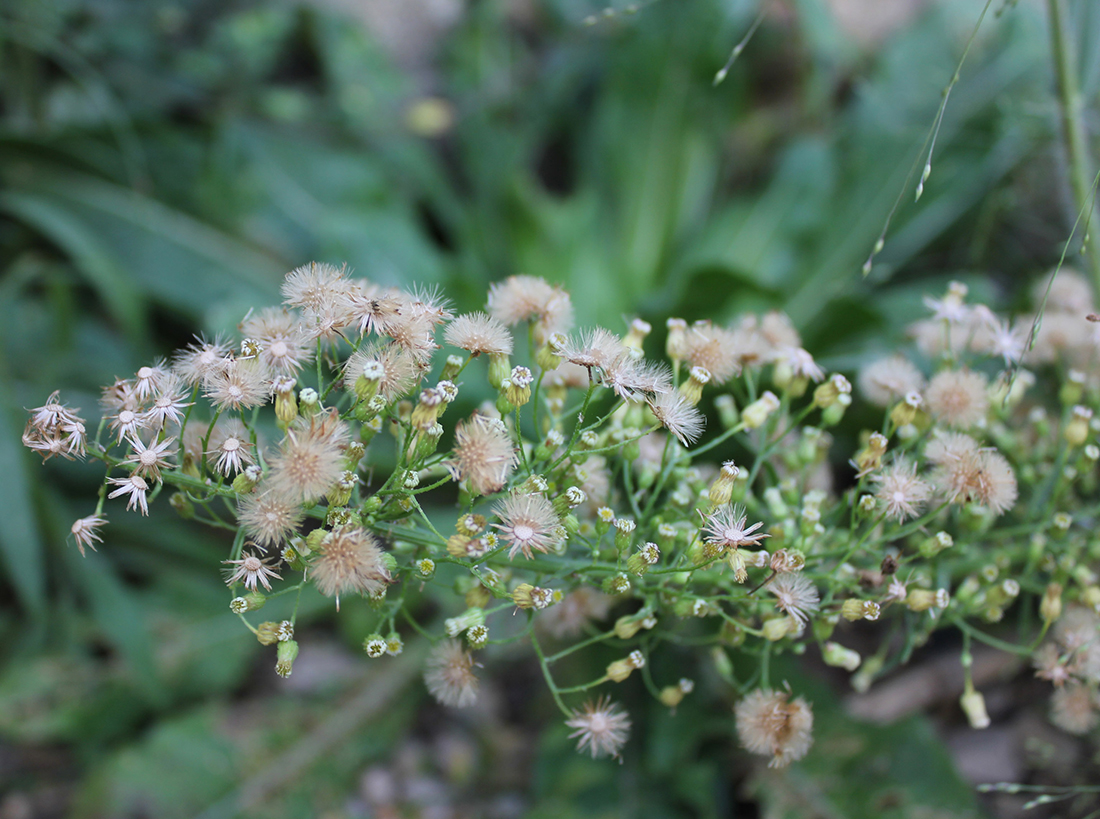Canada Fleabane
- Composite or Aster (Asteraceae family):
- Conyza canadensis (L.) Cronq.
- EPPO code:
- ERICA
- Other names:
- Bitterweed, fleabane, hogweed, horseweed, mare’s-tail
Species information
- Lifecycle:
- Annual or winter annual.
- Propagation:
- Reproduces by seed; the wind dispersed seed can travel several hundred metres from the source plant.
- Emergence:
- The majority of seeds will germinate from August to November while the remainder do so in early spring.
- Range and habitat:
- Found throughout Ontario; more commonly found in cropping systems with reduced tillage, but also in pastures, roadsides and gardens.
- Competitiveness:
- Yield losses in soybeans have been as high as 90% with plant densities at 400,000/ac.
- Resistance:
- Populations exist that are resistant to Group 9 herbicides (for example, glyphosate) and Group 2 herbicides (for example, cloransulam-methyl).
Identification clues
Leaves
- Cotyledons:
- Oblong.
- Young leaves:
- Round to oval, extremely hairy and with entire margins; fall germinated plants will form a basal rosette while spring germinated plants typically skip the rosette stage and bolt.
- Mature leaves:
- Alternate leaf orientation, very hairy, toothed leaf margins.
Mature plant
- Stem:
- Erect, hairy, branched and can be as high as 2 m.
- Flowers:
- Small, white on many short branches, clustered at the top. Flowers from late July to late autumn. Seeds are contained in very small brown fruit bearing a fluffy pappus that aids in wind dispersal.
- Roots:
- Taproot
Often mistaken for
I know it's not Goldenrod because the leaves of Canada fleabane are extremely hairy compared to the relatively hairless leaves of goldenrod. The leaf margins of goldenrod are more sharply toothed then Canada fleabane. Goldenrod has rhizomes compared with Canada fleabane’s taproot.
I know it's not Annual fleabane because the leaves of annual or rough fleabane are much broader, more coarsely toothed and are usually lighter green. The flowers of annual or rough fleabane are much different than Canada fleabane, resembling a daisy flower, although much smaller.





Updated: August 16, 2023
Published: January 13, 2023